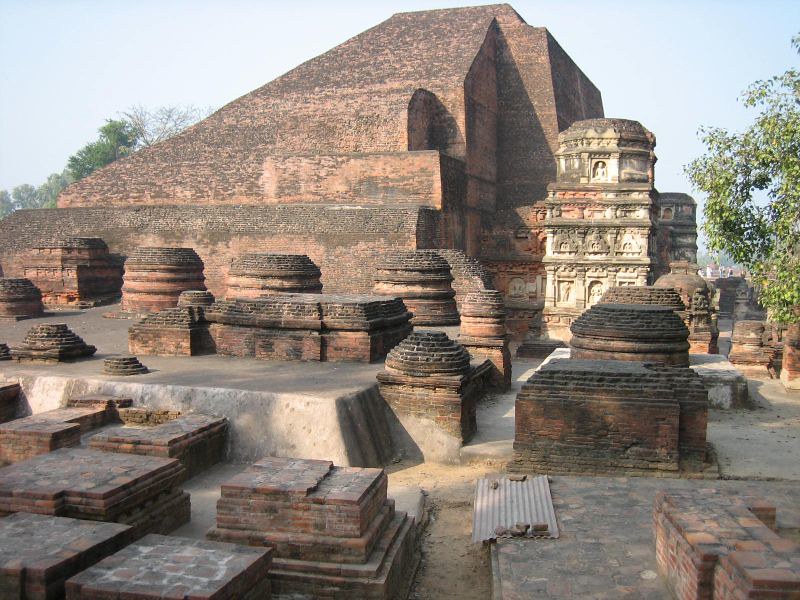
BPSC General Science Question Bank – Physics
BPSC General Science – Physics Question Bank of BPSC Previous Year’s papers for preparation of BPSC Prelims and other Bihar state examinations.
Home » BPSC Study Materials » BPSC Question Bank » BPSC Modern History Question Bank
BPSC Modern history Question Bank of BPSC Previous Year’s Papers for preparation of BPSC Prelims and other Bihar state examinations.
1. Who was the first Portuguese Viceroy in India? (BPSC – 2001)
(a) Diaz
(b) Vasco da Gama
(c) Francisco de Almeida
(d) Albuquerque
Correct Answer – (c) Francisco de Almeida
2. Where in India did Britishers set up their first factory in 1613 ? (BPSC – 1994)
(a) Goa
(b) Hooghly
(c) Amarkot
(d) Surat
Correct Answer – (d) Surat
3. Which of the British officials defeated the Portuguese at Sowlley ? (BPSC – 2000)
(a) William Hawkins
(b) Thomas Best
(c) Thomas Roe
(d) Josiah Child
Correct Answer – (b) Thomas Best
4. Which one of the following was the immediate cause of the First Carnatic War ? (BPSC – 2000)
(a) Anglo-French Rivalry
(b) Austrian War of Succession
(c) Issues of Carnatic Succession
(d) Capture of French ships by the British
Correct Answer – (d) Capture of French ships by the British
5. Emperor Shah Alam- II gave the Diwani of Bengal – Bihar and Orissa to the East India Company on ? (BPSC – 2008)
(a) 12 August, 1765
(b) 18 August, 1765
(c) 29 August, 1765
(d) 21 August, 1765
Correct Answer – (a) 12 August, 1765
6. Identify the region from where Europeans got the best Shora and Opium ? (BPSC – 1995)
(a) Bihar
(c) Bengal
(b) Gujarat
(d) Madras
Correct Answer – (a) Bihar
7. During British rule which region of India was famous for the production of opium? (BPSC – 2005)
(a) Bihar
(c) Gujarat
(b) Southern India
(d) Assam
Correct Answer – (a) Bihar
8. Who was appointed Deputy Diwan of Murshidabad by Robert Clive after the Allahabad Treaty? (BPSC – 2001)
(a) Mohd. Raza Khan
(b) Shitab Rai
(c) Rai Durlabh
(d) Syed Ghulam Hussain
Correct Answer – (a) Mohd. Raza Khan
9. Ranjeet Singh got the famous Kohinoor diamond from ? (BPSC – 1996)
(a) Shah Suza
(b) Zaman Shah
(c) Dost Mohammad
(d) Sher Ali
Correct Answer – (a) Shah Suza
10. Tipu Sultan set up his capital at ? (BPSC – 1992)
(a) Srirangapatnam
(c) Banglore
(b) Mysore
(d) Coimbatore
Correct Answer – (a) Srirangapatnam
11. The British made the Treaty of Srirangapatnam with who among the following ? (BPSC – 1997)
(a) Hyder Ali
(b) Dupleix
(c) Tipu Sultan
(d) Nandraj
Correct Answer – (c) Tipu Sultan
12. Queen Victoria was appointed the Empress of India in ? (BPSC – 1992)
(a) 1858
(b) 1876
(c) 1877
(d) 1885
Correct Answer – (a) 1858
13. Who among the following abolished the ‘Dual Government’ system in Bengal ? (BPSC – 2005)
(a) Robert Clive
(b) Lord Cornwallis
(c) Warren Hastings
(d) None of the above
Correct Answer – (c) Warren Hastings
14. First Maratha Sardar to accept the subsidiary alliance of Lord Wellesley was ? (BPSC – 1996)
(a) Bajirao- II
(b) Raghuji Bhosle
(c) Daulatrao Sindhia
(d) None of the above
Correct Answer – (a) Bajirao- II
15. The first railway in India was laid down during the period of ? (BPSC – 2008)
(a) Lord Dalhousie
(b) Lord Curzon
(c) Lord Wellesley
(d) Lord Lytton
Correct Answer – (a) Lord Dalhousie
16. In which among the following viceroy period, the title of ‘Rai Bahadur’ and ‘Khan Bahadur’ were begun to be conferred to Indians? (BPSC – 2016)
(a) Lord Ripon
(b) Lord Lytton
(c) Lord Mayo
(d) Lord Dufferin
(e) None of the above/More than one of the above
Correct Answer – (b) Lord Lytton
17. “In my belief, Congress is tottering to its fall and one of my great ambitions while in India is to assist it to a peaceful demise.” Who wrote it? (BPSC – 2016)
(a) Lord Lytton
(b) Lord Dufferin
(c) Lord Curzon
(d) Lord Minto
(e) None of the above/More than one of the above
Correct Answer – (c) Lord Curzon
18. “The Muslims, if contented and satisfied, would become the greatest bulwark of British power in India”. Who wrote it ? (BPSC – 2016)
(a) Herbert Risley
(b) Lord Lytton
(c) W.W. Hunter
(d) H.N. Brailsford
(e) None of the above/More than one of the above
Correct Answer – (c) W.W. Hunter
19. The ‘Permanent Settlement’ was made with ? (BPSC – 2011)
(a) Zamindars
(b) Village communities
(c) Muqaddamas
(d) Peasants
Correct Answer – (a) Zamindars
20. Which one of the following is correct about the permanent settlement introduced in Bihar ? (BPSC – 2008)
(a) The Zamindars were deprived of the ownership of the land.
(b) The right of ownership of land was made hereditary and transferable for the Zamindars.
(c) Land revenue was constitutionalised
(d) Abolition of Zamindari
Correct Answer – (b) The right of ownership of land was made hereditary and transferable for the Zamindars.
More questions are coming soon. Join us on Whatsapp for latest updates: Join CivilsCracker on Whatsapp

BPSC General Science – Physics Question Bank of BPSC Previous Year’s papers for preparation of BPSC Prelims and other Bihar state examinations.

BPSC Indian Geography Question Bank of BPSC Previous Year’s papers for preparation of BPSC Prelims and other Bihar state examinations.

BPSC Medieval history Question Bank for preparation of BPSC Prelims and other Bihar state examinations.

BPSC Ancient history Question Bank for preparation of BPSC Prelims and other Bihar state examinations.
We are adding new Notes, Chapterwise MCQs, Quizzes, Previous Years Questions everyday
We are adding new Notes, Chapterwise MCQs, Quizzes, Previous Years Questions everyday